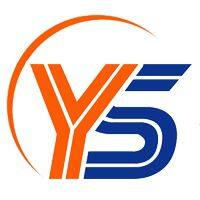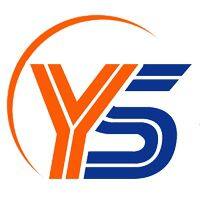Home > Blog > Barrier Performance Testing of Nonwoven Medical Protective Clothing: Comprehensive Protection from B
-
 Liu
Hi there! Welcome to my shop. Let me know if you have any questions.
Liu
Hi there! Welcome to my shop. Let me know if you have any questions.
Your message has exceeded the limit.

Barrier Performance Testing of Nonwoven Medical Protective Clothing: Comprehensive Protection from B
2025-08-06 09:15:33I. Why Multi-Layer Barrier Testing is Essential for Medical Protective Clothing
In scenarios such as surgeries and infectious disease control, protective clothing must simultaneously address three types of threats:
1.Liquid penetration risks: Blood and bodily fluids (tested via ASTM F1671 for synthetic blood penetration)
2. Microbial penetration risks: Viruses and bacteria (validated by ISO 16604 for viral barrier performance)
3. Particle-borne risks: Pathogens carried by droplets or dust (requires combined filtration efficiency testing)
Industry Status: In 2023, 68% of healthcare worker infections due to protective clothing failures were linked to substandard barrier performance (WHO data).
II. Comparison of Core Testing Standards and Medical-Grade Requirements
Test Type | Standard | Simulated Threat | Passing Threshold | Application Scenario |
Liquid Barrier | ASTM F1671 | Synthetic blood (surface tension: 42 dyn/cm) | No penetration (within 2 hours) | Surgical procedures, trauma care |
Viral Barrier | ISO 16604 | ΦX174 bacteriophage (27nm) | No penetration (within 1 hour) | High-risk operations (e.g., Ebola, HIV) |
Microbial Barrier | ISO 22610 | Bacterial suspension | No penetration (60 mins, Level 3 protection) | General isolation wards |
Pressure Penetration | AATCC 127 | Hydrostatic pressure | ≥50 cmH₂O (Level 3 protection) | Splash-resistant scenarios |
Key Differences:
ASTM F1671 only tests liquid penetration, while ISO 16604 detects nanoscale viral penetration.
China’s GB 19082-2009 lacks viral testing, but the 2024 revision plans to include an ISO 16604 equivalent method.
III. Testing Challenges and Solutions
1. Specificity of Viral Testing:
ΦX174 bacteriophage requires 48-hour culturing, costing up to ¥2,000 per sample.
Alternative: Fluorescent-labeled polystyrene microspheres (100nm) for pre-screening, reducing costs by 70%.
2. Dynamic Pressure Simulation:
Surgical sutures can create localized pressures >20 kPa (standard tests only apply 3.5 kPa).
Innovative Equipment: Germany’s Textest FX3300 simulates penetration under suture stress (Patent DE102021003789).
3. Material Aging Effects:
Post ethylene oxide sterilization, electrostatic charge decay in melt-blown layers increases viral penetration by 5-8x.
Pre-Treatment Requirement: GB 19082-2024 adds a "post-sterilization retest" clause.
IV. Emerging Trends: From Passive Barriers to Smart Protection
1. Self-Detecting Viral Materials:
Swiss-developed color-changing nonwovens turn red upon contact with SARS-CoV-2 spike protein (95% sensitivity).
Cost: ¥80/m² (currently in lab phase).
2. Reusable Protective Clothing:
DuPont™ Tyvek® 600 withstands 50 washes + ISO 16604 testing (commercialized in 2024).
Nanoscale Barrier Technology:
Graphene-coated nonwovens:
99.99% viral barrier efficiency (Nature 2023).
40% higher breathability than traditional materials.
4. Digital Certification:
Blockchain records test data (e.g., SGS’s "Chain-Based Test Report" anti-counterfeit system).
V. Enterprise Compliance Guidelines
1. Material Selection Recommendations:
Material Type | ASTM F1671 Pass Rate | ISO 16604 Pass Rate | Cost (¥/m²) |
3-layer SMS nonwoven | 98% | 85% | 12-15 |
PTFE microporous membrane composite | 100% | 97% | 35-50 |
Electrospun nanofibers | 95% | 92% | 80-120 |
2. Testing Strategy:
Basic Screening: ASTM F1671 + AATCC 127 (1 business day).
Premium Certification: ISO 16604 + ISO 22610 (3-5 business days).
3. Certification Acceleration:
Passing ISO 16604 concurrently qualifies for EU PPE Category III certification.
Tags: Microbial Barrier, Emerging Trends, ISO 16604

